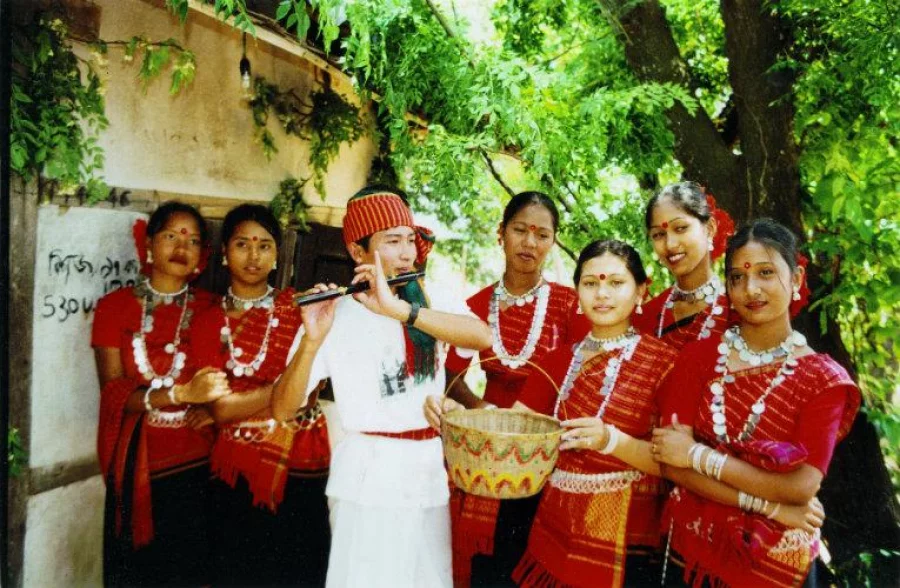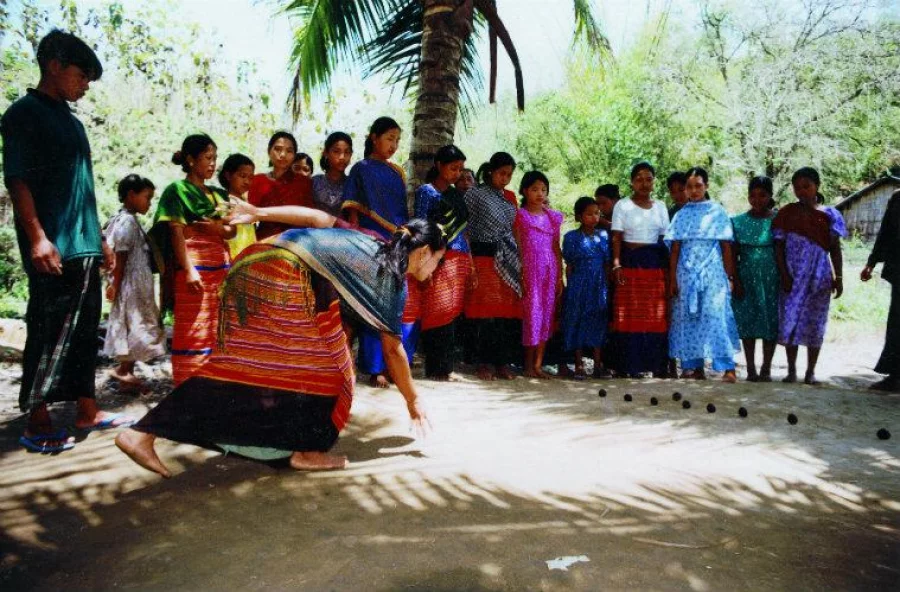Bidding farewell to the old year and welcoming the the new take different forms and shapes according to the rituals, cultures and above all, ethnicity of the people celebrating. Different new years are celebrated around the world, and these celebrations a great opportunity to peer into the cultural diversity among the people of different societies and nations.
The celebration of the Gregorian new year often involves dazzling firework displays, whereas the celebration of Bangla new year - 'Pohela Baishakh' - is more about promoting the heritage and vibrancy of the Bangla culture through processions and fairs. Encompassing the lives of around some 163 million people with diverse social, religious and ethnic backgrounds, the celebration of Bangla new year in Bangladesh lists two major festivals: Pohela Boishakh and Boisabi, the first one is a fete for all Bangladeshis, while the second festival is historically spearheaded by three of the main indigenous communities who live in the Chittagong Hill Tracts region. The name Boisabi has been generated from the combination of the first few letters of their individual festivals (Boi from Boisu (Tripura), Sa from Sangrai (Marma) and Bi from Bijhu (Chakma). However, with the lively participation of people irrespective of race and religion, both of the festivals are becoming more widely observed and inclusive every year.
The Bijhu festival
Denoting the end of the Chakma calendar year, the Chakma community celebrate Bijhu, where the “Bi” means 'farewell' and “Jhu” means 'welcome'. The timing of Bijhu coincides with the new year celebration of most of the Buddhist countries along with the traditional calendars of South and Southeast Asia. It is generally celebrated on April 12, 13 and 14 (the last two days of the bengali month Chaitra and the first day of Baishakh). It marks the end of the harvest season and also coincides with one of two instances when the sun is directly above Asia.
To bid a merry adieu to the bygone year and cheering in the new one, the Chakmas engage in a three-day long celebration, two of which fall on the year that's about to end.

Phul Bijhu
The first day of the festival is dedicated to celebrations for Phul Bijhu (flower Bijhu). Kids wake up very early in the morning to collect flowers. When they return with flowers, girls of the family decorate the house with them. As a symbol of their devotion and respect to all the gods and goddesses, flowers and lit lamps are placed on banana leaves, which are then flown in rivers, canals or ponds during the sunrise. Offerings are also made to the deity with rice, fruits, sugar. In a bid to pay respect to the elders, the youngsters rise up early and take water from the river and bathe the old villagers and relatives with that water.
Mul Bijhu
The second and the most celebrated day of the festival is named Mul Bijhu (main Bijhu) because of all the merrymaking and significance of the day. Preparations for the day usually starts from the night before, when members of the community gather item to make “Pajon,” a mouth-watering traditional dish consisting of five to 32 different ingredients, including wild potato, dried fish and shrimps, raw jackfruit, peas, bean seeds, black beans, bamboo shoots and other summer vegetables. As chakmas count this day as very auspicious, they engage in religious rituals in the morning. The later part of the day is dedicated for visiting relatives and neighbors as a symbol of their harmony, enjoying the delicacies and exchanging greetings and tributes.
Gojyai Pojya Din

The first day of the new year is called 'Gojya Pojya Din' - a day to slide into happiness. The rituals of the previous day continue till the final day of the festival. Gojya Pojya literally means slacking off in the Chakma language. Originally this was a day meant for resting and relaxation. With time it evolved into the festivity currently observed. Now the Chakmas spend the day mostly socializing: eating together and going on excursions with their families and relatives. Young girls wear the traditional 'pinon and khadi' which is made from hand woven cloths. Chakma boys used to wear Dhuti, but the practice is less common now. Both boys and girls wear new dresses to celebrate the new year and gather in groups to enjoy each other’s company and wander from house to house at leisure. Playing traditional games in the afternoon is also a common practice of the day.
Among many delicacies of the festival, the Chakmas make two kinds of rice wines on the occasion of the Bijhu. The first one is more clear and very strong 'Do-chawnee', which is made from fermented rice juices and distilled twice in the process, hence the name Do-chawnee. It contains about 70-75 percent of alcohol. And then, there are the mild 'Jogora' and 'Hanji'. Jogora is made by fermenting Binni rice, and it’s very sweet in taste, while Hanji is mildly sour. Jogora and Hanji both contain very little amount of alcohol.

 The first day of the new year is called 'Gojya Pojya Din' - a day to slide into happiness. The rituals of the previous day continue till the final day of the festival. Gojya Pojya literally means slacking off in the Chakma language. Originally this was a day meant for resting and relaxation. With time it evolved into the festivity currently observed. Now the Chakmas spend the day mostly socializing: eating together and going on excursions with their families and relatives. Young girls wear the traditional 'pinon and khadi' which is made from hand woven cloths. Chakma boys used to wear Dhuti, but the practice is less common now. Both boys and girls wear new dresses to celebrate the new year and gather in groups to enjoy each other’s company and wander from house to house at leisure. Playing traditional games in the afternoon is also a common practice of the day.
Among many delicacies of the festival, the Chakmas make two kinds of rice wines on the occasion of the Bijhu. The first one is more clear and very strong 'Do-chawnee', which is made from fermented rice juices and distilled twice in the process, hence the name Do-chawnee. It contains about 70-75 percent of alcohol. And then, there are the mild 'Jogora' and 'Hanji'. Jogora is made by fermenting Binni rice, and it’s very sweet in taste, while Hanji is mildly sour. Jogora and Hanji both contain very little amount of alcohol.
The first day of the new year is called 'Gojya Pojya Din' - a day to slide into happiness. The rituals of the previous day continue till the final day of the festival. Gojya Pojya literally means slacking off in the Chakma language. Originally this was a day meant for resting and relaxation. With time it evolved into the festivity currently observed. Now the Chakmas spend the day mostly socializing: eating together and going on excursions with their families and relatives. Young girls wear the traditional 'pinon and khadi' which is made from hand woven cloths. Chakma boys used to wear Dhuti, but the practice is less common now. Both boys and girls wear new dresses to celebrate the new year and gather in groups to enjoy each other’s company and wander from house to house at leisure. Playing traditional games in the afternoon is also a common practice of the day.
Among many delicacies of the festival, the Chakmas make two kinds of rice wines on the occasion of the Bijhu. The first one is more clear and very strong 'Do-chawnee', which is made from fermented rice juices and distilled twice in the process, hence the name Do-chawnee. It contains about 70-75 percent of alcohol. And then, there are the mild 'Jogora' and 'Hanji'. Jogora is made by fermenting Binni rice, and it’s very sweet in taste, while Hanji is mildly sour. Jogora and Hanji both contain very little amount of alcohol.
